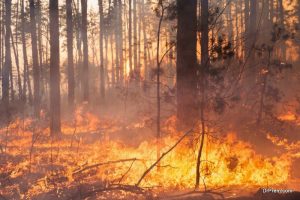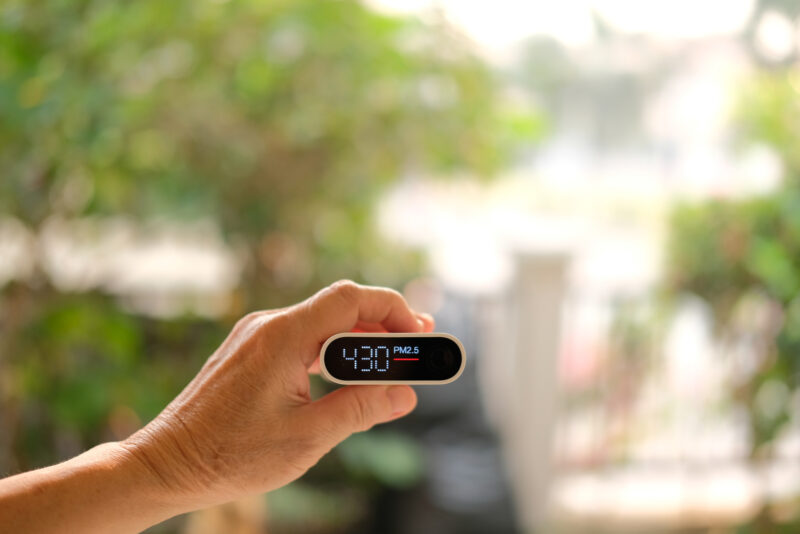
Health Risks of Wildfire Smoke and How to Protect Your Family
Wildfires are becoming more frequent and more dangerous. Understanding what wildfire smoke is and the danger it poses to your health can help you know how to protect yourself. From sealing your home to using air purifiers and staying updated on air quality, we can help you breathe easier during wildfire season.
Understanding Wildfire Smoke
Composition of Wildfire Smoke
Wildfire smoke is made up of gases, hazardous air pollutants (HAPs), volatile organic compounds (VOCs), and particle pollution.
- Gases: Methane, carbon monoxide, sulfur dioxide, and carbon dioxide.
- HAPs: Formaldehyde, acrolein, and acetaldehyde.
- VOCs: Irritant compounds and non-methane volatile organic carbon (NMVOC).
- Particle Pollution: Soot.
How Smoke Spreads
The heat from the wildfire causes the smoke to rise high into the air, as high as five miles. When the smoke falls, it dilutes and spreads. The heat from the wildfires can also release pollutants from the soil, like mercury and other heavy metals, which get lifted into the air with the smoke and deposited everywhere the smoke lies.
Health Risks Associated with Wildfire Smoke
Short-term Health Effects
Wildfire smoke causes immediate health effects such as coughing and irritation to the eyes, nose, and throat. You may also get a headache the more you breathe in the smoke. These symptoms should go away within 24-48 hours after the exposure ends. If not, see a healthcare provider immediately.
Long-term Health Effects
The long-term effects of wildfire smoke can include problems involving your respiratory health, cardiovascular health, and other health concerns. You may develop asthma, bronchitis, obstructive pulmonary disease (COPD), or even lung cancer. Exposure to PM2.5, a component of wildfire smoke, increases the risk of heart attack, stroke, and heart failure. Wildfire smoke can even cause cognitive decline and premature death.
Vulnerable Populations
Children, the elderly, and pregnant women are most at risk, especially if they already have health concerns. If there is a wildfire in your area and someone in your family is at risk, evacuate them immediately.
Protecting Your Family from Wildfire Smoke
Indoor Protection Measures
Sealing areas inside your home where poor air quality can reach you should be the first step. You can do this by adding weatherstrips or caulking any holes that lead outside. It’s best to do this before wildfire season starts, ideally around the winter months.
Personal Protection
Wearing N95 masks outdoors is a good idea if you need to go outside. However, limit your time outside unless absolutely necessary. Even if you’re not close to where the fire is happening, poor air quality can still affect you states away. In September 2023, Canada experienced its most destructive wildfire ever recorded, affecting states in the US from Georgia to Montana. Wearing a mask and staying indoors with a fresh air filter can help limit pollution in your home.
Creating a Safe Room
In cases where wildfire smoke is severe in your area, create a room that has minimal access to the outside. Choose a room with little to no windows where you can add an air purifier to ensure the air you breathe is safe. The bathroom could be a good place with the air vent running, but if you have multiple people that need to stay safe and a small bathroom, you might need to find another spot. Closets are also a good option, or a bedroom with the least amount of windows. Keep in mind that you want to be within earshot of a radio or TV giving updates on the fire.
Monitoring and Staying Informed
Air Quality Index (AQI)
The air quality index (AQI) has a scale from 0-500; the higher the number, the higher the air pollution. The scale is broken into six categories:
- Good: 0-50, poses little or no risk.
- Moderate: 51-100, some sensitive people may be concerned.
- Unhealthy for Sensitive Groups: 101-150, people with certain conditions may experience effects outdoors (e.g., asthma, heart or respiratory concerns).
- Unhealthy: 151-200, risk for any person.
- Very Unhealthy: 201-300, stay indoors.
- Hazardous: 300+, air is too hazardous to breathe; take precautions.
You can easily check your local AQI with apps like AirNow or even your weather app. You can also sign up for alerts on your phone for cases of severe weather and poor air quality.
Staying Updated
Local news and weather channels will give you updates if you are in an affected area. Continue monitoring your news channels so you know when and if you need to evacuate or go to a safe spot in your home.
Conclusion
Keeping yourself and your family safe from wildfire smoke is just as important as staying safe from the wildfire itself. Knowing the dangers of the smoke, how to seal up your home, using protection like air purifiers, and staying on top of air quality updates can make a big difference. These steps can help you breathe easier and keep your loved ones safe during wildfire season. Stay prepared and take care of one another.
Article By Community Writer.
creditSource link






